The coefficient of friction between the two two blocks is 0.3 where as the surface AB is smooth
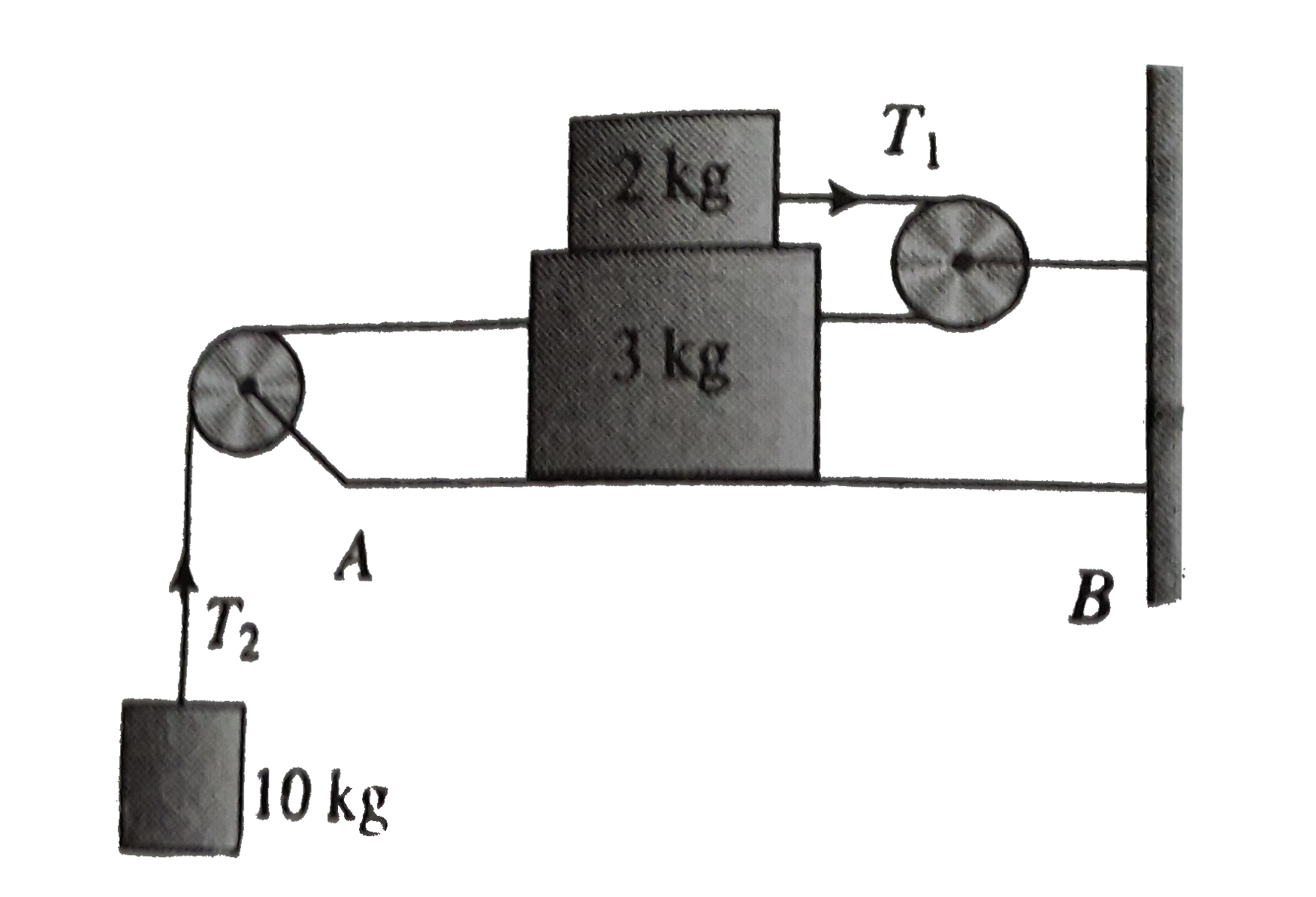
Acceleration of the system masses is 88/15ms−2
Net force acting on 3kg mass is greater than that on 2kg mass
Tension T2>T1
Since 10kg mass is acceleration downward , so the net force acting on if should be greater than any of the two block shown in figure
The correct Answer is:a,b,c
Let the acceleration of each blocks be a
10g−T2=10a,T2−T1−f=3a
T1−f2a where f=0.3×2g=6N
From above equations
10g−2f=15a⇒10×10−2×6=15a
a=88/15ams−2
T2=10g−10a=10×10−10×8815=41.3N
T1=f+2a=6+2×8815=17.7N
Clearly T2>T1
b. This is correct because of greater mass of 3kg since acceleration is same for both.
c. This is incorrect , because force acting on 10kg mass is greater due to its larger mass not due to its acceleration downward
Topper's Solved these Questions
- BOOK - CENGAGE PHYSICSCHAPTER - NEWTON'S LAWS OF MOTION 2EXERCISE - Multiple Correct2videos
NEWTON'S LAWS OF MOTION 2
- BOOK - CENGAGE PHYSICSCHAPTER - NEWTON'S LAWS OF MOTION 2EXERCISE - Linked Comprehension52videos
NEWTON'S LAWS OF MOTION 2
- BOOK - CENGAGE PHYSICSCHAPTER - NEWTON'S LAWS OF MOTION 2EXERCISE - Subjective21videos
NEWTON'S LAWS OF MOTION 2
- BOOK - CENGAGE PHYSICSCHAPTER - NEWTON'S LAWS OF MOTION 1EXERCISE - Integer5videos
NEWTON'S LAWS OF MOTION 1
- BOOK - CENGAGE PHYSICSCHAPTER - PROPERTIES OF SOLIDS AND FLUIDSEXERCISE - INTEGER_TYPE2videos
PROPERTIES OF SOLIDS AND FLUIDS
Similar Questions
The coefficient of static friction between two blocks is 0.5 and the table is smooth. The maximum horizontal force that can be applied to move the blocks together is N. (take g=10ms−2)
 View Solution
View SolutionTwo blocks of masses 'm' and and 'M' are arranged as shown in the The coefficient of friction between the two blocks is 'μ', where as between the lower block and the horizontal surface is zero. Find the force 'F' to be applied on the upper block for the system to be under equilibrium ? .
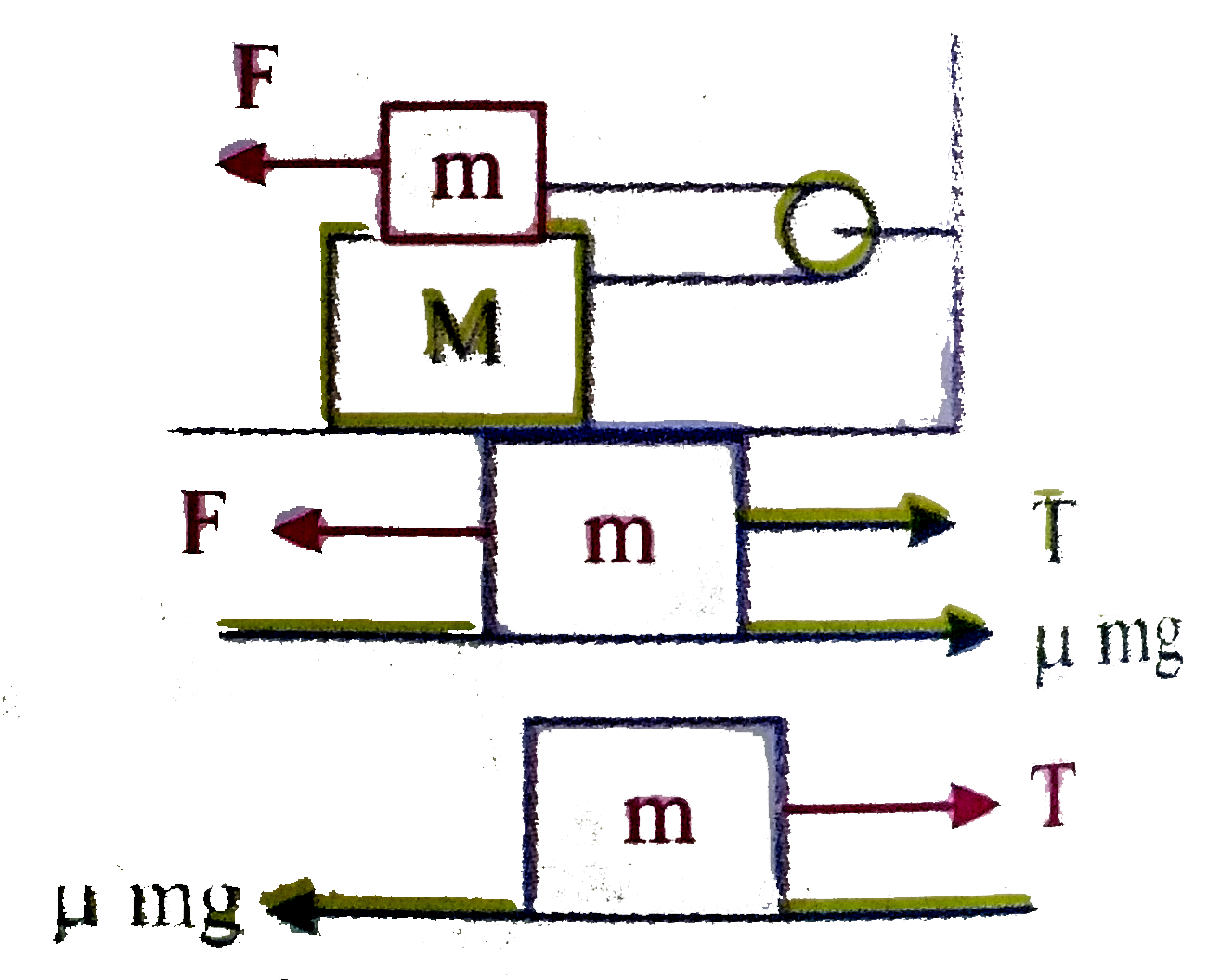 View Solution
View Solution
Knowledge Check
- Question 1 - Select One
Consider the shown arrangement. The coefficient of friction between the two blocks is 0.5 . There is no friction between the 4 kg block and of 12 N is applied on the 2 kg block as shown in the figure, the acceleration of the 4 kg block would be
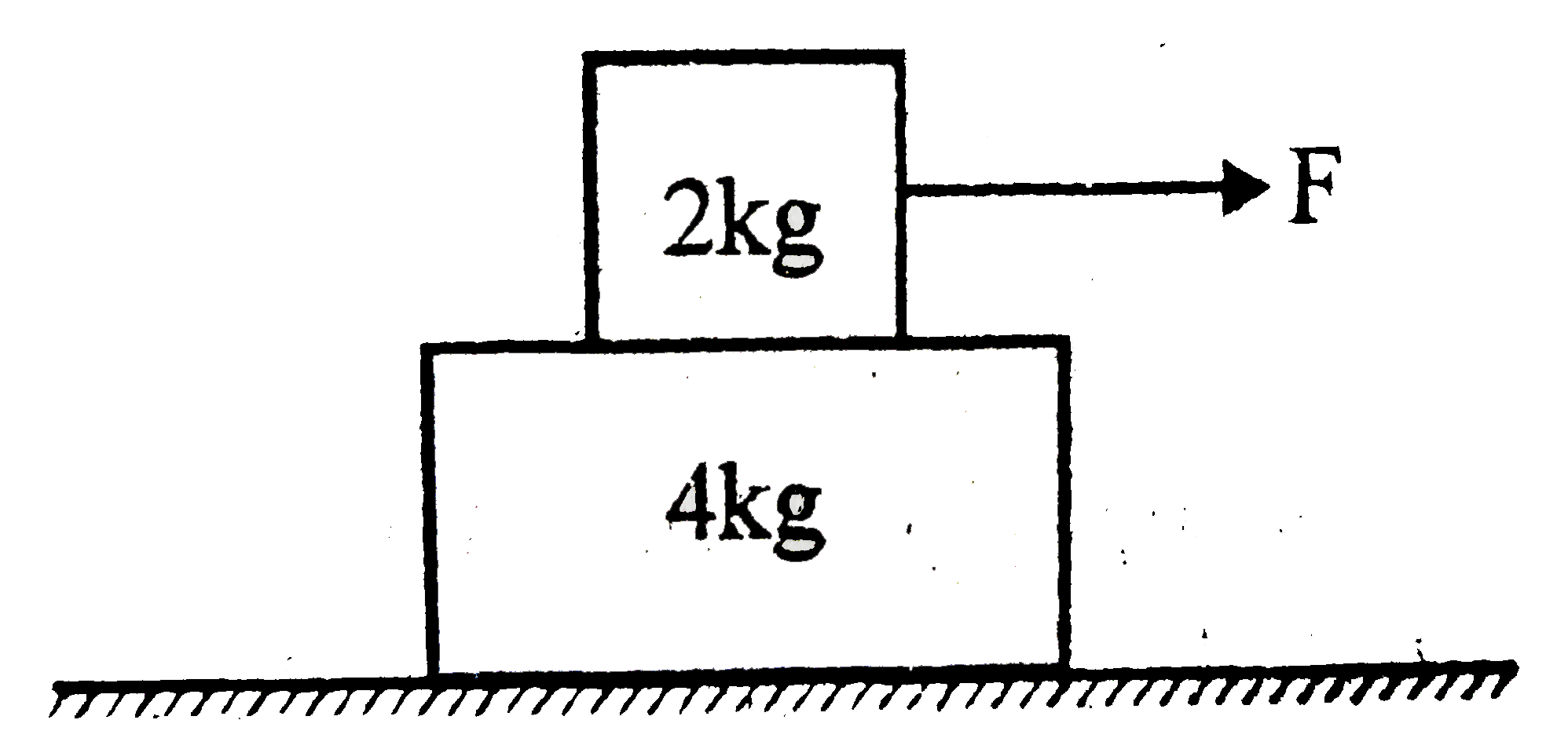 A2.5m/s2B2m/s2C5m/s2DNone
A2.5m/s2B2m/s2C5m/s2DNone - Question 2 - Select One
The coefficient of static friction between the two blocks is 0.363. What is the acceleration of block 1 so that block 2 does not fall ?
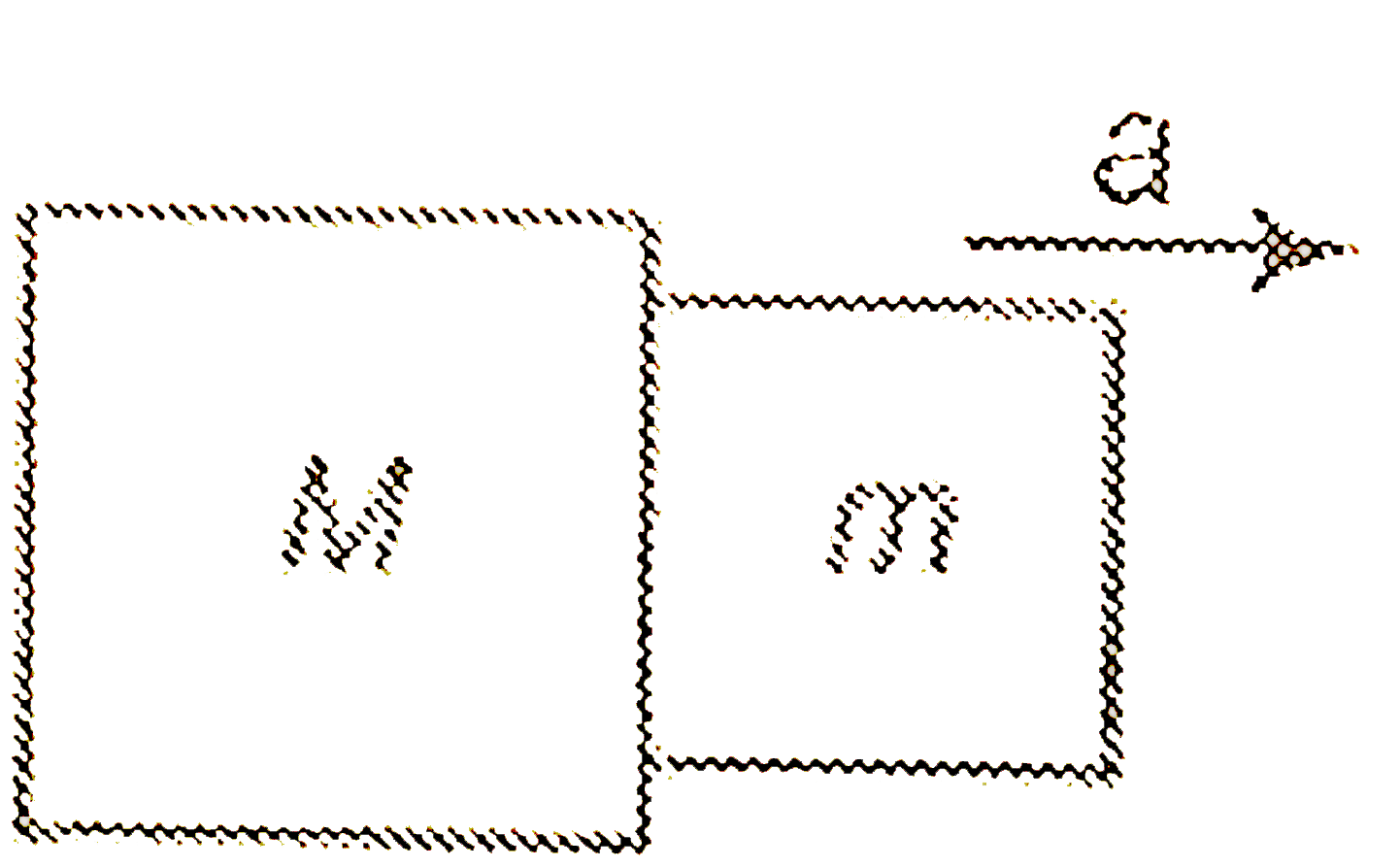 A6ms−2B12ms−2C18ms−2D27ms−2
A6ms−2B12ms−2C18ms−2D27ms−2 - Question 3 - Select One
Consider the arrangement shown in the figure. The coefficient of friction between the two blocks is 0.5 and between the 4 kg block and the horizontal surface is 0.4. If a horizontal force of 12 N is applied on the 4 kg block, the acceleration of the 2 kg block would be
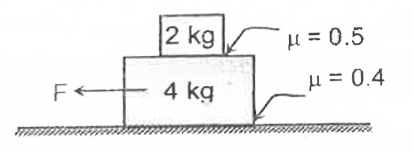 A2.5m/s2B2m/s2C5m/s2Dzero
A2.5m/s2B2m/s2C5m/s2Dzero
On a smooth horizontal surface a block A of mass 10kg is kept. On this block a second block B of mass 5kg is kept. The coefficient of friction between the two blocks is 0.4 .A horizontal force of 30N is applied on the lower block as shown. The force of friction between the blocks is
View SolutionThe coefficient of static friction between the two blocks shown in figure is μ and the table is smooth. What maximum horizontal forced F can be applied to he block of mass M so that the block move together?
 View Solution
View SolutionA block A slides over an another block B which is placed over a smooth inclined plane as shown in figure . The coefficient of friction between the two blocks A and B is μ . Mass of block B is two times the mass of block A . The acceleration of the centre of mass of two blocks is
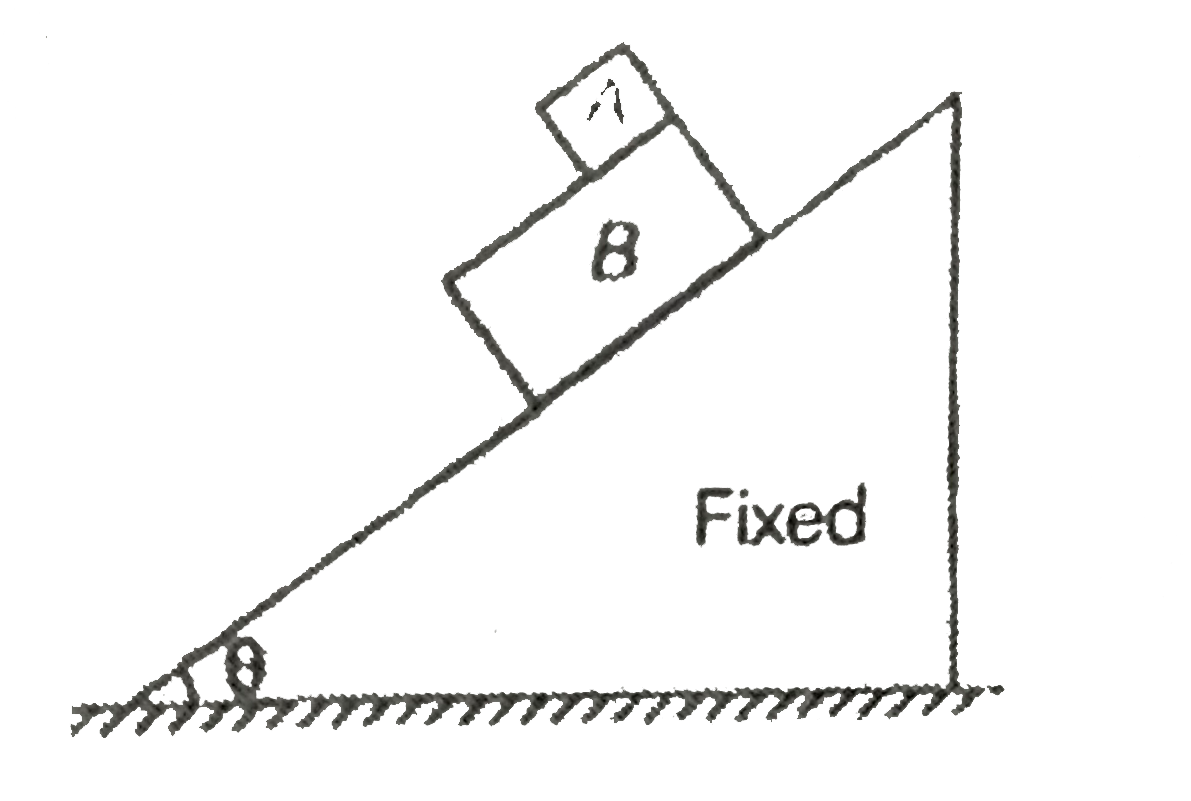 View Solution
View SolutionA block A slides over another block B which is placed over a smooth inclined plane. The coefficient of friction between the two blocks. A and B is μ. Mass of block B is two times the mass of block A. The acceleration of the centre of mass of two blocks is
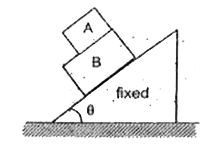 View Solution
View SolutionFor the arrangement shown in the figure the coefficient of friction between the two blocks is μ. If both the blocks are identical and moving ,then the acceleration of each block is
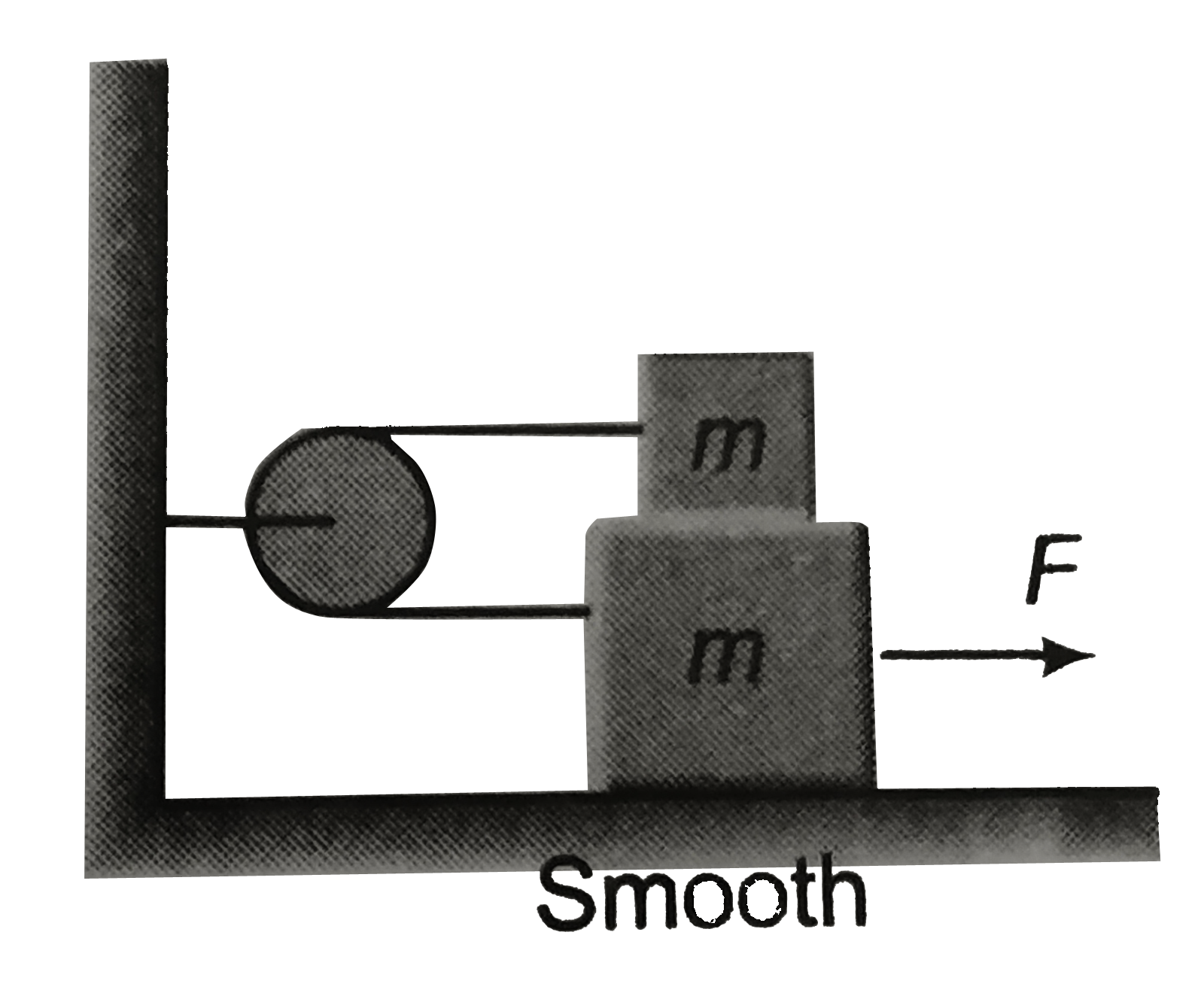 View Solution
View Solution

